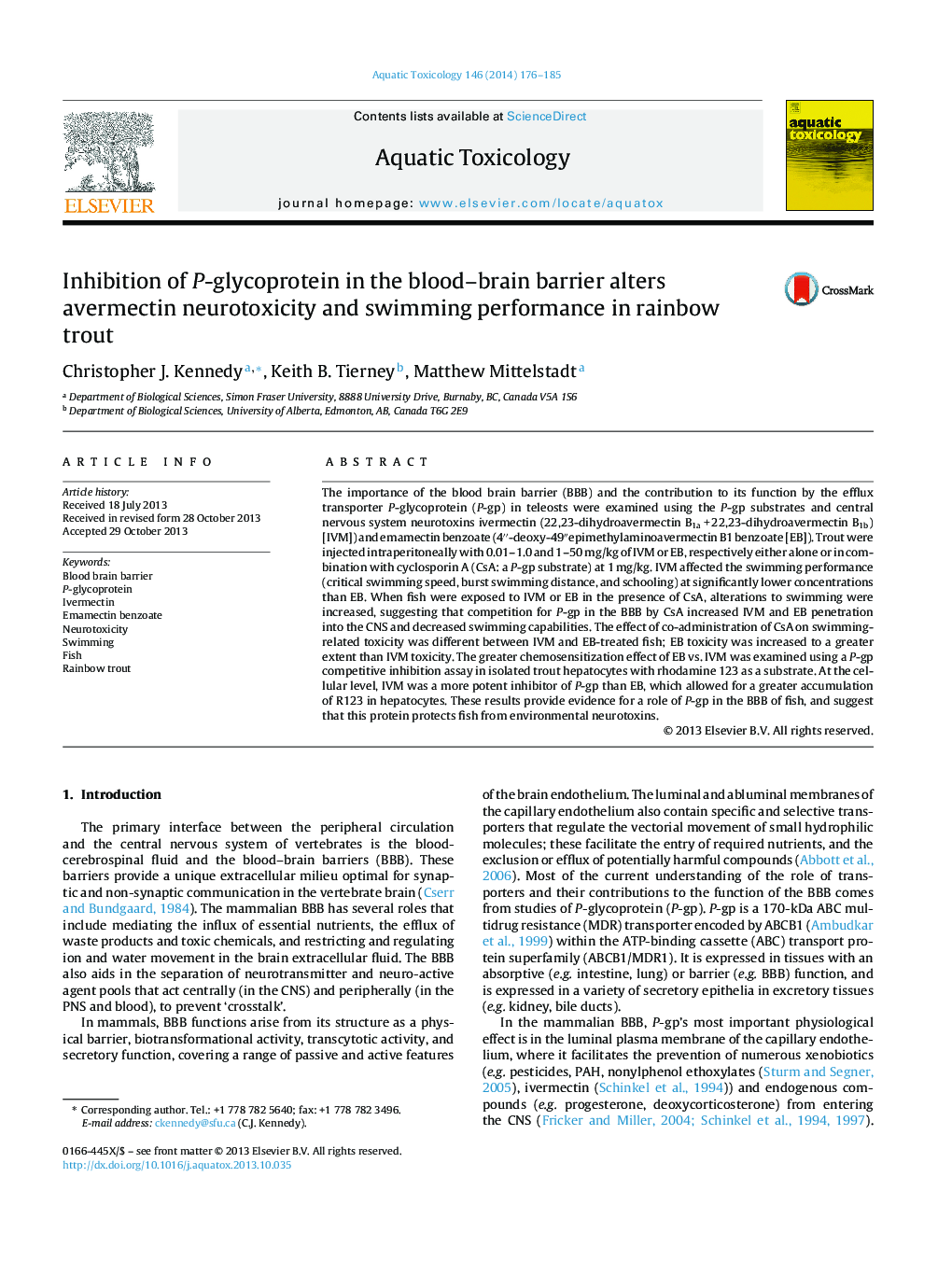| Article ID | Journal | Published Year | Pages | File Type |
|---|---|---|---|---|
| 6382628 | Aquatic Toxicology | 2014 | 10 Pages |
Abstract
The importance of the blood brain barrier (BBB) and the contribution to its function by the efflux transporter P-glycoprotein (P-gp) in teleosts were examined using the P-gp substrates and central nervous system neurotoxins ivermectin (22,23-dihydroavermectin B1a + 22,23-dihydroavermectin B1b) [IVM]) and emamectin benzoate (4â³-deoxy-49â³epimethylaminoavermectin B1 benzoate [EB]). Trout were injected intraperitoneally with 0.01-1.0 and 1-50 mg/kg of IVM or EB, respectively either alone or in combination with cyclosporin A (CsA: a P-gp substrate) at 1 mg/kg. IVM affected the swimming performance (critical swimming speed, burst swimming distance, and schooling) at significantly lower concentrations than EB. When fish were exposed to IVM or EB in the presence of CsA, alterations to swimming were increased, suggesting that competition for P-gp in the BBB by CsA increased IVM and EB penetration into the CNS and decreased swimming capabilities. The effect of co-administration of CsA on swimming-related toxicity was different between IVM and EB-treated fish; EB toxicity was increased to a greater extent than IVM toxicity. The greater chemosensitization effect of EB vs. IVM was examined using a P-gp competitive inhibition assay in isolated trout hepatocytes with rhodamine 123 as a substrate. At the cellular level, IVM was a more potent inhibitor of P-gp than EB, which allowed for a greater accumulation of R123 in hepatocytes. These results provide evidence for a role of P-gp in the BBB of fish, and suggest that this protein protects fish from environmental neurotoxins.
Keywords
Related Topics
Life Sciences
Agricultural and Biological Sciences
Aquatic Science
Authors
Christopher J. Kennedy, Keith B. Tierney, Matthew Mittelstadt,
